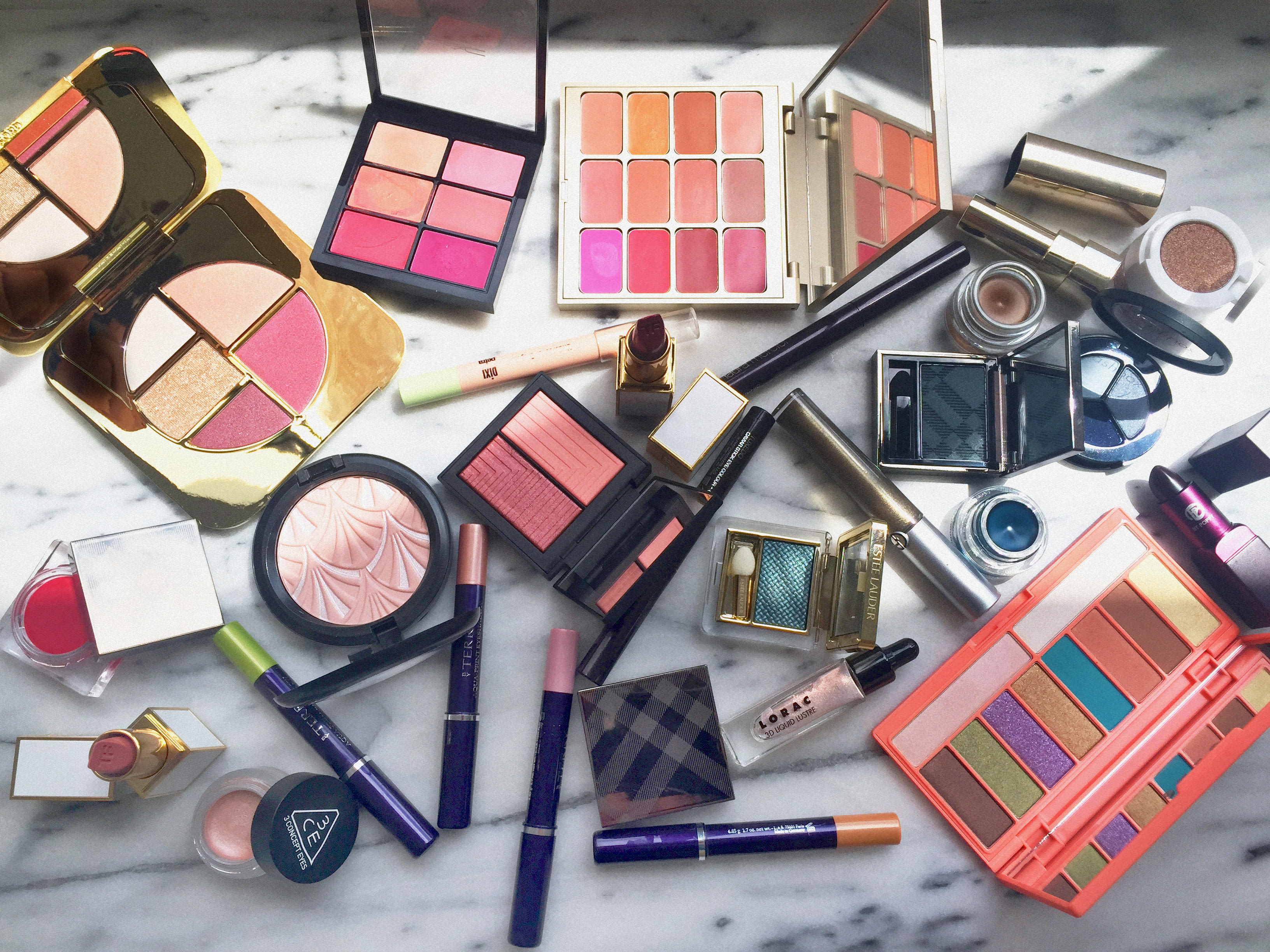I am a reluctant autumn.
For the most part, seasonal color analysis in cosmetics has gone the way of the key party—left behind in the '70s and early '80s where it belongs (though I hear from deep parts of the internet, those are still around? I don't know from experience). However, the basic wisdom is still pretty clear: Some shades look like crap on you while others don’t. Your mom calls it “coloring'; I prefer “undertones.”
When it comes to clothing, I’ve been around long enough to know that mustard is a far better bet than pale yellow against my sallow skin (or in the common J.Crew parlance—yay to saffron, nay to lemon zest). However, in the realm of makeup, this message has proven a little harder for me to process.
I’ll give you an example: For some time now, I’ve been enamored with Lipstick Queen’s Hello Sailor lipstick. In the tube, it’s a pretty blue that becomes a kind of post-swim practice/pre-hypothermia violet-pink wash on the lips. I love it—really, really love it. Except for one thing—while supposedly “universally flattering,” Hello Sailor actually makes me look universally dead, like a live-action Corpse Bride. I wear it anyway.
After lamenting this fact to my somewhat rosier-cheeked sister, she suggested that it was because I am “golden-skinned” (she is kind). In exchange for looking kind of crazy in Hello Sailor, I can “pull off the kind of bright reds not everyone can wear.” Seems fair, I guess. She is a graduate of art school so she comes by her knowledge of complementary colors honestly, namely from Josef Albers’ seminal text, Interaction of Color. The gist of color theory is this: Your eyes perceive color in context, not in isolation, and some contexts are more pleasing than others.
In the 1940s, nightclub singer/milliner Suzanne Caygill took notions of color theory devised by Albers and others and ran straight to the beauty counter/clothing rack with them. She was among the first to associate “seasonal” colors with skin tones and preached her philosophy (The Suzanne Caygill Method) far and wide through books, seminars, consultations, etc.—the phrase “getting your colors done” refers to her modus operandi. Caygill started with the basics: winter (cool-toned skin, dark haired), spring (warm-toned skin, light hair), summer (cool-toned skin, light hair), and fall autumn (warm-toned skin, dark hair). From there, things got crazy-complicated—the taxonomy breaking down into further subcategories including pixie autumns, patrician winters, platinum summers and so on, and so on. Caygill’s characterizations of these groups didn’t stop at recommended makeup and clothing colors but extended into defining personality types, body shapes, speech patterns, and ideal accessories for each season.
As far as I can tell, according to Caygill’s off-the-wall descriptions in Color: The Essence of You (1980), I am a bronze autumn. This means I should wear “animal fixative perfumes” (sounds musky) and favor brown velvet as a “special focalizer” in my sartorial choices. Also, I should default to “orange and clear red” lipsticks and “avoid blue reds.” Bingo. That probably means avoiding those blue-blues too—hello, Sailor.
A quick survey of the rest of my makeup stash turned up a lot of would-be Caygill offenders in the lip-stuff arena: one Clinique Chubby Stick in Super Strawberry (a cool pink balm), a Smashbox Be Legendary Lipstick in Infrared Matte (a bright red with a fair amount of blue), Clinique Almost Lipstick in Black Honey (honestly, something has felt a bit off about it for years), and Dior Addict Extreme Lipstick in the purply Black Tie. My lone coloring-appropriate everyday shade is a Neutrogena stick I snagged from my mother with a label that had worn of long ago (it’s a nice, super-flattering burgundy-brown). Clearly, I have been determined to turn my mouth into a winter for some time now.
So, what’s a seasonally-confused product hoarder to do? First, be happy that you didn’t have your cosmetic coming-of-age in the mid-20th century. If you’ve ever wondered why your mother and/or grandmother pledge unswerving fealty to certain lipstick shades, Caygill and her cronies are the answer. They managed to turn makeup application into a sort of compulsory Myers-Briggs test for your face in their day. That said, vestiges of Albers’ color theory certainly exist in cosmetics today. Alice Lane’s recent tutorials for brown, green, and blue-eyed girls are a crash course in the use of complimentary colors in fresh and unexpected ways. Thankfully, her advice is much more about play than pigeonholing. As 21st century girls, we’re free to do what we want, but consider—when what you want and what looks good align, real magic tends to happen.
Ultimately, I’ve decided to hold onto my Hello Sailor (while supplementing it with a few “autumnal” hues). Seasons change—and so can I.
—Lauren Maas
Photographed by Tom Newton.

